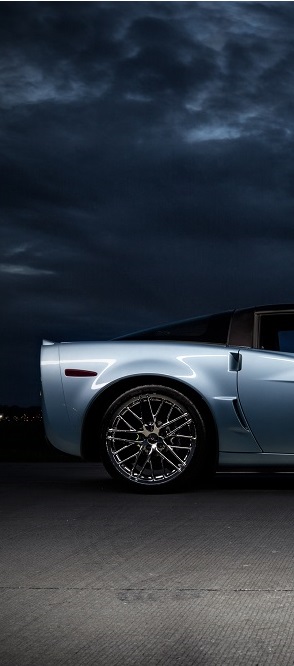

Caterham Seven Superlight with power to spare
In the beginning, 1972, Caterham 7 uses the Lotus twin camshaft engine sourced from Vegantune. The new company tried Ford cross flow engines but Cosworth BDR began appearing in Caterham vehicles in 1983; firstly with the 1.6 Liter engine producing 140 bhp (104 kW) then they kicked it up a notch to the 1.7 Liter developing 150 bhp (112 kW). In 1990 there was more than one engine available but the largest regular production unit is the 2 liter HPC made by Vauxhall rated at between 165-175 bhp. There were a few HPC Evolution models built by Caterham that used a Swinton Race Engines that gives the HPC between 218 bhp (163 kW) and 235 bhp (112 kW).
© Weinelm | Dreamstime.com – Yellow Caterham Sports Car Photo
Jonathon Palmer is a formula one race driver that has the Caterham manufactured JPE Special Edition vehicle as his namesake in 1993. The JPE uses the Vauxhall 2 liter touring engine under the hood which not only produces 250 bhp (186 kW) but it is also lighter and this special edition has a curb weight of 530,kg !,168 lbs.). This car also has more weight saving measures taken such as removing the windshield and replacing it with an aeroscreen. The JPE with Jonathan Palmer at the wheel manages to do 0-60 mph in 3.5 seconds and goes on to set the track record for 0-100 mph (180 km/h) in 12.6 seconds.. Long about 1997 the Vauxhall cross flow engine is replaced by two Vauxhall units-a V8 and a V12 with some variations but remain as two of the Caterham standard offers until 2002.
© Epalaciosan | Dreamstime.com – Caterham Super Seven Race. Photo
The mainstay of Caterham vehicle power plants for 15 years is the Rover K-series which is first offered in 1991 as a 1.4 Liter engine sourced from Metro GTi. The Rover K-series 1.6 Liter engine comes online in 1996 quickly followed by 1.8 Liter version the following year. The Rover 1.8 coincides with the superlight Caterham line-these units are bare bones with all the creature comforts removed although you can choose to furnish it as you like. The model can be mounted with the aeroscreen instead of the windshield to shed a few more kilos. The superlight could also be ordered minus the trunk and hood if you choose. The seat in this version is an ultra-low weight Tillet GPR Bucket or two if you would rather, as well, the nose cone and the front wings are made of carbon fiber to squeeze the maximum return out of the high performance 1.6 liter Rover. The superlight features a wider wheel track to negotiate curves and corners quickly. The super light R series is a natural progression is to the“R500” series superlight powered by the Rover K series dry –sump VHPD (Very High Performance Derivative) 1.8 liter engine which produces 180 bhp (134 kW) and offers 230 bhp (172 kW) at 8,600 rpm in a light weight 460 kg (1,014 lbs.,) vehicle. The car can do 0-100 mph (180 km/h) in a neck snapping 8.2 seconds. The high performance engine is finicky and although the car was originally only available as a kit car it soon became only available as a finished product.
Extreme performance is achieved in 2004 with the R500 EVO powered by the Rover engine but now bored to 1.998 Liters and putting 250 bhp (186 kW) under the hood. There were only three of these produced but they carried a price tag of 42,000 British pounds or around $69,000.00 US without a heater or any other optional goodies. One of the three units sold left a high end Ferrari Enzo in its dust-a vehicle that someone paid ten times the price for took second place
Republished by Blog Post Promoter








